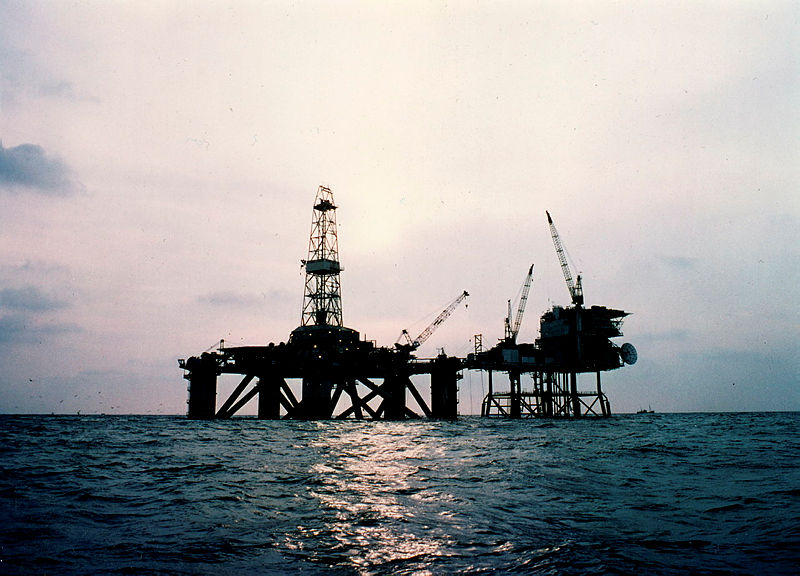Alexander L Kielland – Norway’s worst-ever industrial accident

Unable to believe his ears, Fanebust stopped to listen but heard no more. He was soon in contact with supply ship Normand Engineer, which lay two nautical miles north of the flotel. It had also picked up the Mayday call and wanted to sail immediately to investigate. Normand Skipper was ordered to do the same.
The rescue operation was difficult. Night was falling and a gale blowing. In just 20 minutes, the inconceivable had occurred – fatigue failure in a bracing had caused one of the flotel’s five legs to tear off. The unbalanced unit then tipped over. [REMOVE]Fotnote: Kvendseth, Stig S, Giant Discovery. A History of Ekofisk Through the First 20 Years, 1988: 144-145.
Chaos prevailed on board as the list became more and more pronounced. Much went wrong with lowering the lifeboats. Many of those on board had no chance, and 123 people died. Just 89 survived the worst industrial accident in Norwegian history.

The wreck
Named for a well-known 19th century Stavanger novelist, Alexander L Kielland had originally been commissioned as a drilling rig by the Stavanger Drilling company. It was built to the French Pentagone design at France’s Companie Francaise d’Entreprises Metalliques (CFEM) yard in 1976.
On Greater Ekofisk, the rig was used solely as a flotel and had been moored from the summer of 1979 alongside the Edda platform, a few kilometres south-west of the Ekofisk Complex. It was linked to Edda by a bridge, but this had been removed on the day of the accident because of the bad weather.[REMOVE]Fotnote: Ryggvik, Helge and Smith-Solbakken, Marie, Blod, svette og olje, Norsk oljehistorie volume 3, Oslo, 1997: 213.
The loss of one support column meant the flotel began to list. That in turn caused water to pour into the other four pontoons and into the topside decks, increasing the incline even more.
People on board strove despairingly to reach the lifeboat deck. Very few managed to collect a lifejacket from their cabin. The supply of survival suits was limited. Stocks of lifejackets around the public areas were soon exhausted.
What went wrong
A number of unfortunate circumstances combined to complicate evacuation.
- Three of the seven 50-seater lifeboats were crushed against the flotel side by the list. Only two of the remainder were used.
- Those on board had received inadequate safety training, which was not mandatory for ”hotel guests” under the prevailing regulations. Most were therefore unfamiliar with the safety equipment.
- Nobody was able to work the release mechanism on the inflatable rafts, which had a capacity of 400 people. A couple of them nevertheless released themselves when the rig capsized, and three men got into of them.
- Another 13 managed to swim across to rafts thrown from the Edda platform.
- Fourteen of the people who landed directly in the icy sea were saved.
- Seven managed to swim to the platform and were hoisted up in personnel baskets.
- The remaining survivors had succeeded in entering lifeboats and were rescued by ships or helicopters. They reported very dramatic experiences.[REMOVE]Fotnote: Smith-Solbakken, Marie, Historien om plattformen som ikke kunne velte. I: “Alexander L. Kielland” – ulykken: Ringene i vannet. 2017, Hertervig Akademisk.
Rescue work
Several factors hampered rescue efforts. Darkness fell quickly, and fog thickened. The south-westerly wind created wave heights of six-eight metres, combined with a strong current. Temperatures were 7°C in the air and only 4°C in the sea. So only the vessels which arrived first at the accident site had any realistic chance of rescuing survivors from the sea and from rafts.
The joint rescue coordination centre (JRCC) for southern Norway was alerted within minutes of the disaster, and an extensive rescue campaign was launched at once. This involved aircraft, helicopters from Norway, Denmark, West Germany and the UK, and naval and civilian vessels from the whole North Sea basin.[REMOVE]Fotnote: Nerheim, Gunnar and Gjerde, Kristin Øye, Uglandrederiene. Verdensvirksomhet med lokale røtter. 1996: 378-379
Divers were mobilised in the days after the accident to do the demanding job of finding the dead and bringing them to the surface. This had to done under the capsized flotel with masses of wreckage washing around.[REMOVE]Fotnote: Gjerde, Kristin Øye and Ryggvik, Helge, On the Edge, Under Water. Offshore Diving in Norway, 2014.
arrow_backWitnessed rescue operation from landWilliam Graham about the accidentarrow_forward